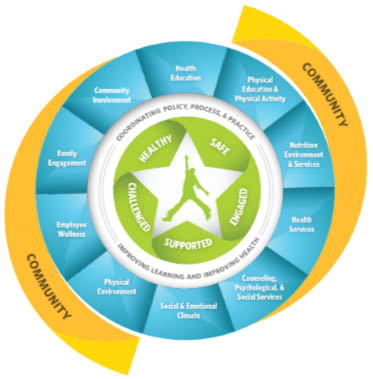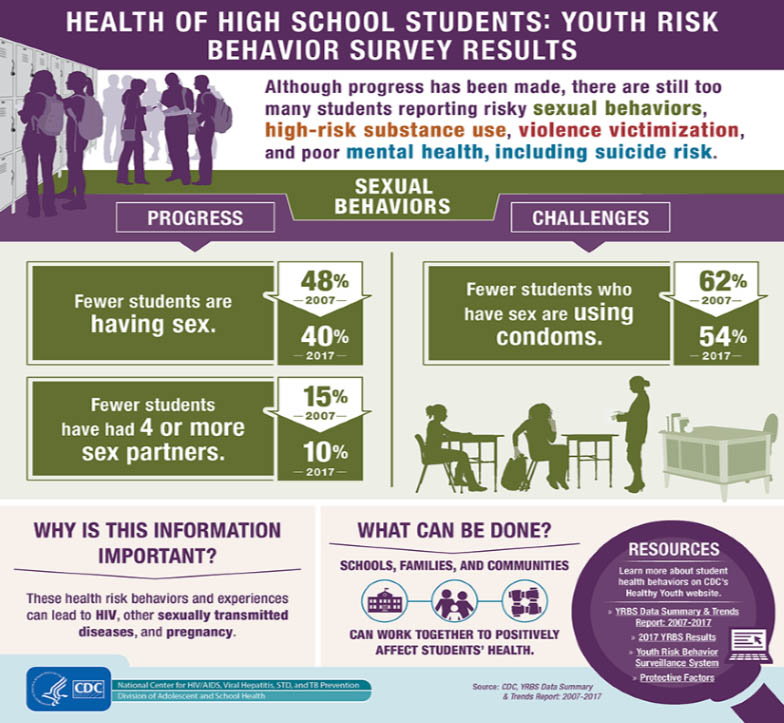Teen Newsletter: September 2020 – Healthy Schools
The David J. Sencer CDC Museum (CDCM) Public Health Academy Teen Newsletter was created to introduce teens to public health topics. Each month will focus on a different public health topic that CDC studies. Newsletter sections: Introduction, CDC’s Work, The Public Health Approach, Special Feature, Out of the CDC Museum Collection, and Activities.
Introduction – Healthy Schools
School is back in session, but this year looks very different for a lot of students in grades K-12. Whether you are virtual or in person, school plays an important role in your life. Schools have direct contact with more than 95% of our nation’s young people aged 5 to 17 years—that’s you. Most students, depending on age, spend approximately 6 hours per day and up to 13 critical years of their social, psychological, physical, and intellectual development in school. Schools play an important role in promoting your health and safety by helping you establish lifelong health patterns.
Healthy students are better learners, and academic achievement bears a lifetime of benefits for health. Schools are an ideal setting to teach and provide you with opportunities to improve your dietary and physical activity behaviors and manage your chronic health conditions (i.e., asthma, diabetes, epilepsy, food allergies, poor oral health). When school health policies and practices are put in place, you can grow to be healthy and successful adults.
CDC’s Work – Healthy Schools
CDC Healthy Schools works with states, school systems, communities, and national partners to prevent chronic disease and promote your health and well-being. The Whole School Whole Community Whole Child (WSCC) model is our framework for addressing health in schools. The WSCC model is student-centered and emphasizes the role of the community in supporting the school and the importance of evidence-based policies and practices.
CDC Healthy Schools promotes:
- Healthier nutrition options and education.
- Comprehensive physical activity programs and physical education.
- Improved processes and better training to help students manage chronic conditions.
- Health education that instills life-long healthy habits and health literacy.
- Practices that improve school health services and links to clinical and community resources.
CDC Healthy Schools is committed to the goal of creating healthier schools where students are safe, engaged, supported, and challenged.
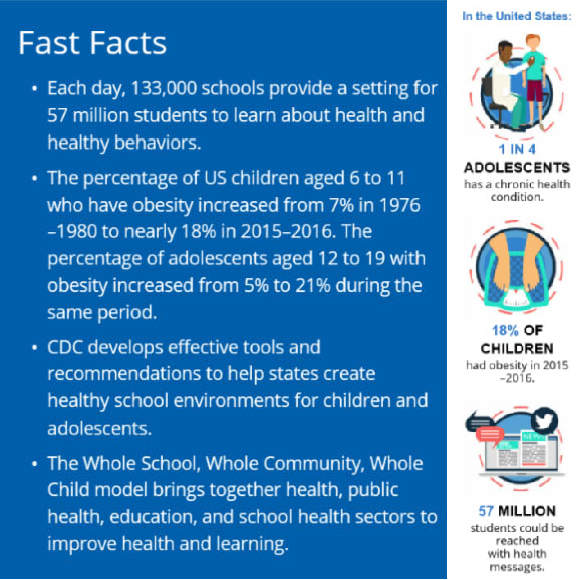
The Public Health Approach – Healthy Schools
Public health problems are diverse and can include infectious diseases, chronic diseases, emergencies, injuries, environmental health problems, as well as other health threats. Regardless of the topic, we take the same systematic, science-based approach to a public health problem by following four general steps.
- Surveillance (What is the problem?)
In public health, we identify the problem by using surveillance systems to monitor health events and behaviors occurring among a population.CDC Healthy Schools uses three surveillance systems administered by CDC’s Division of Adolescent and School Health to monitor health behaviors, practices, and policies in schools:
- School Health Profiles (Profiles)
- School Health Policies and Practices Study (SHPPS)
- Youth Risk Behavior Surveillance System (YRBSS)
To better explain the other steps, let’s focus on a topic presented in the YRBSS sexual behaviors infographic above—condom use. Fewer students who have sex are using condoms.
- Risk Factor Identification (What is the cause?)
After we’ve identified the problem, the next question is, “What is the cause of the problem?” For example, are there factors that might make certain populations more susceptible to disease, such as something in the environment or certain behaviors that people are practicing? Why are more students who have sex not using condoms? According to the 2019 YRBS, prevalence of condom use was less common among non-Hispanic black and Hispanic students compared with non-Hispanic white students; this is a health disparity. As public health practitioners, we wonder, do these students have access to sexual and reproductive health education and clinical services? - Intervention Evaluation (What works?)
Once we’ve identified the risk factors related to the problem, we ask, “What intervention works to address the problem?” We look at what has worked in the past in addressing this same problem and if a proposed intervention makes sense with our affected population. Variations in condom use behavior by demographic characteristics were examined by the YRBS to support public health professionals in implementing quality sexual and reproductive health education and clinical services that prevent STDs/HIV and unintended pregnancy. - Implementation (How can we do it?)
In the last step, we ask, “How can we implement the intervention? Given the resources we have and what we know about the affected population, will this work?” CDC Healthy Schools uses the data collected through the three surveillance systems above to identify effective strategies, develop and evaluate programs, and develop guidelines and tools to improve school health policies, programs, and curricula. As you can see, using The Public Health Approach helps public health professionals identify populations needing targeted interventions.
Special Feature – Healthy Schools
This month we are featuring work by students who, just recently, completed the CDC Museum Public Health Academy 2020 Online Summer Course. This was a new course that was offered to the 615 students who applied to the CDC Museum Public Health Academy 2020 Disease Detective Camp. The course was created and offered to those students because the CDC Museum had to cancel the in-person Disease Detective Camp this summer due to the COVID-19 pandemic. Please be aware you are not able to click on any links in their work.
First, is a case study created by Caroline Dannacher from New York, New York that focuses on youth physical activity and physical education:
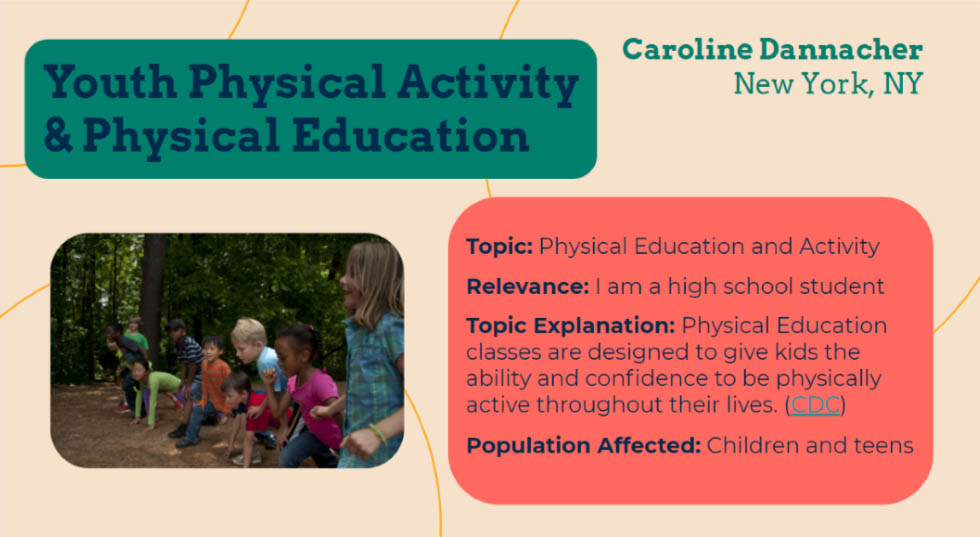
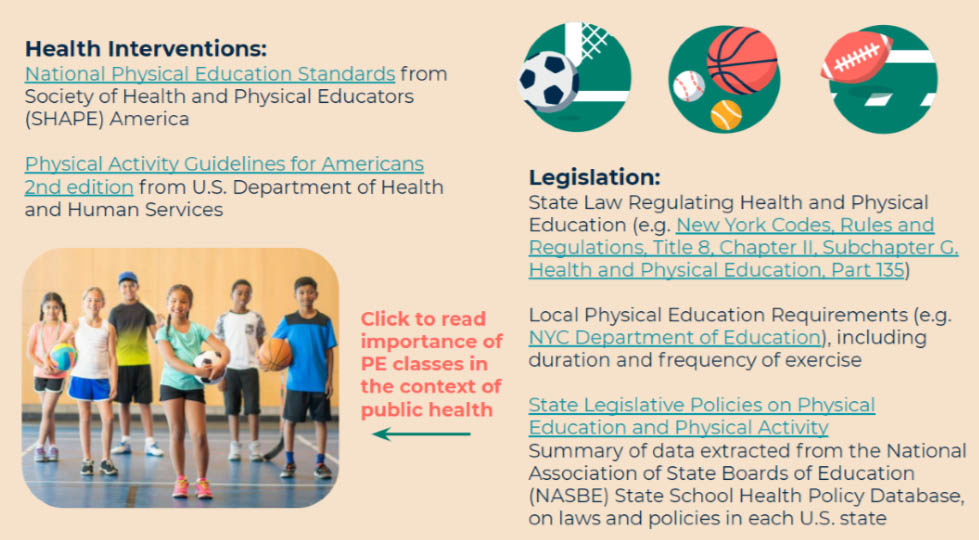
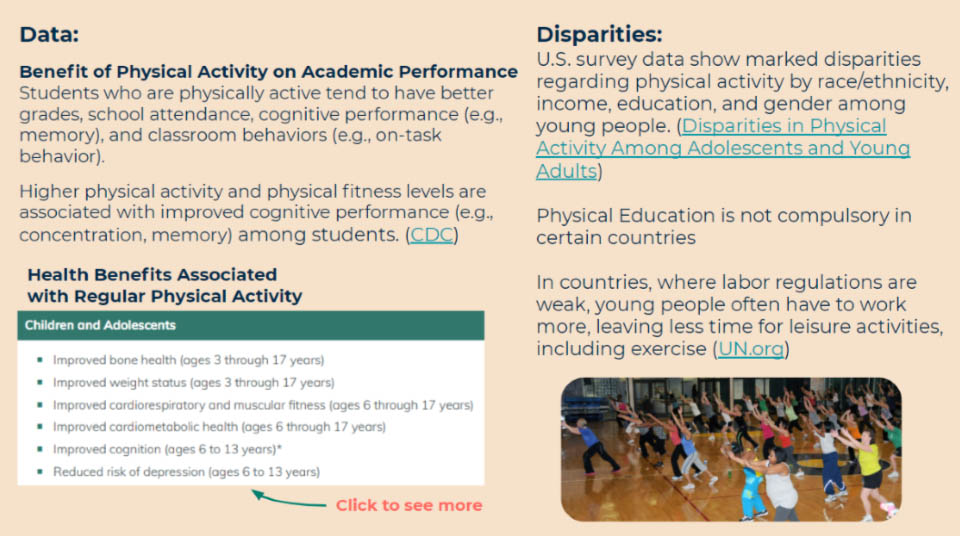
Check out the CDC Healthy Schools webpage on physical activity and physical education for more information on the topic.
Next, is a case study created by Bhuvana Kode from Cumming, Georgia that focuses on childhood obesity:

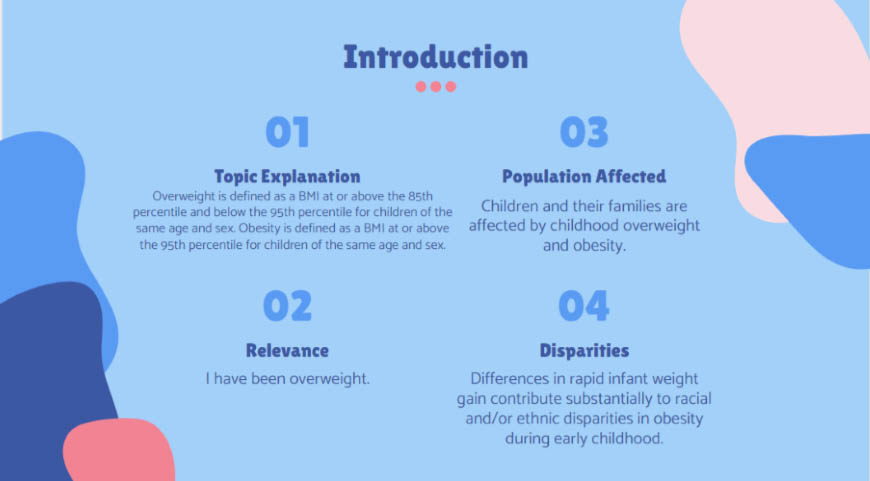
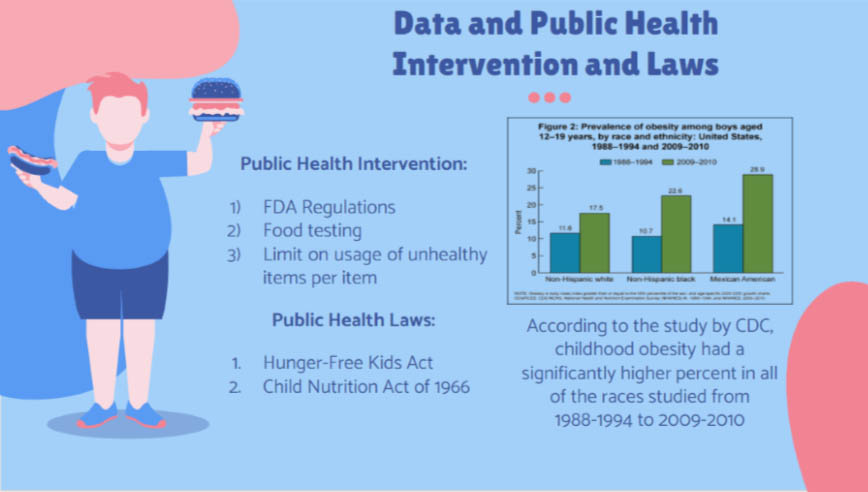
Check out the CDC Healthy Schools webpage on childhood obesity for more information on the topic.
Next, is a case study created by Rhea Khandelwal from Princeton Junction, New Jersey that focuses on sleep deprivation:
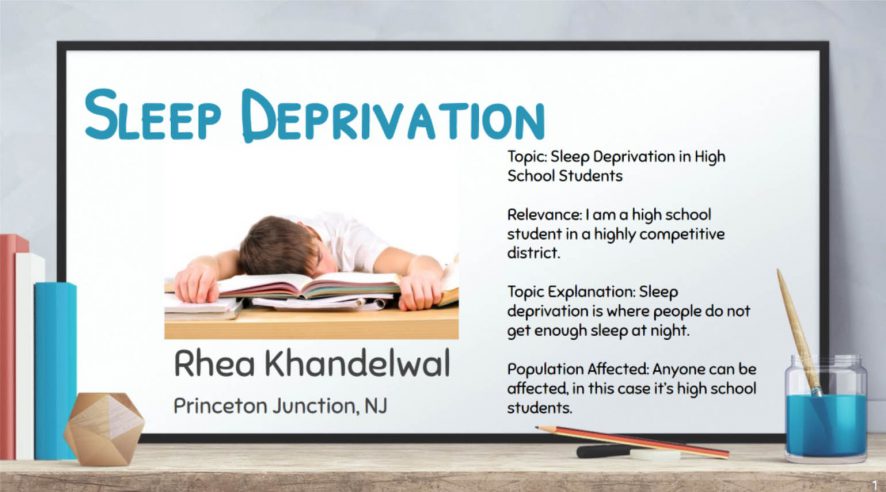
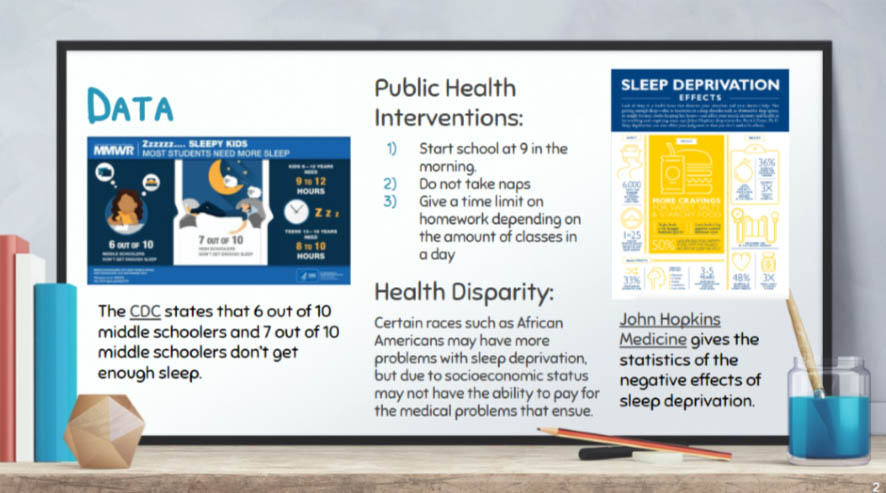
Check out the CDC Healthy Schools webpage on sleep and health for more information on the topic.
Next, is a case study created by Kelly Hong from Bolingbrook, Illinois that focuses on drug abuse among teens:
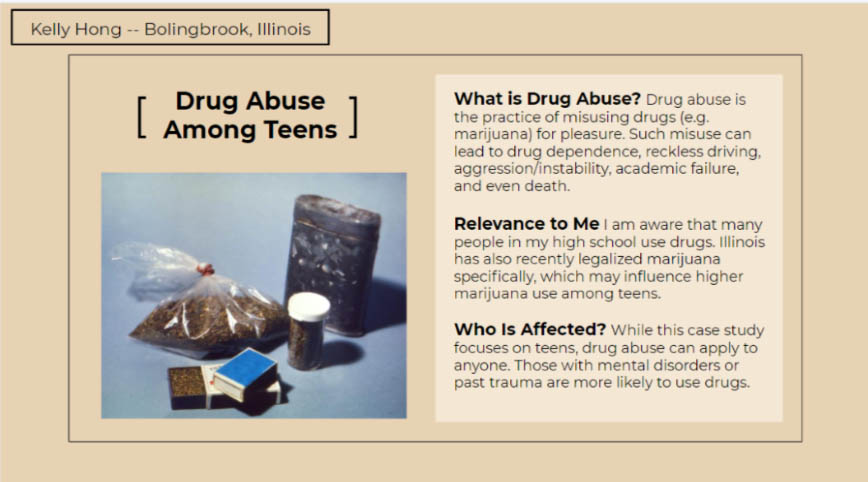
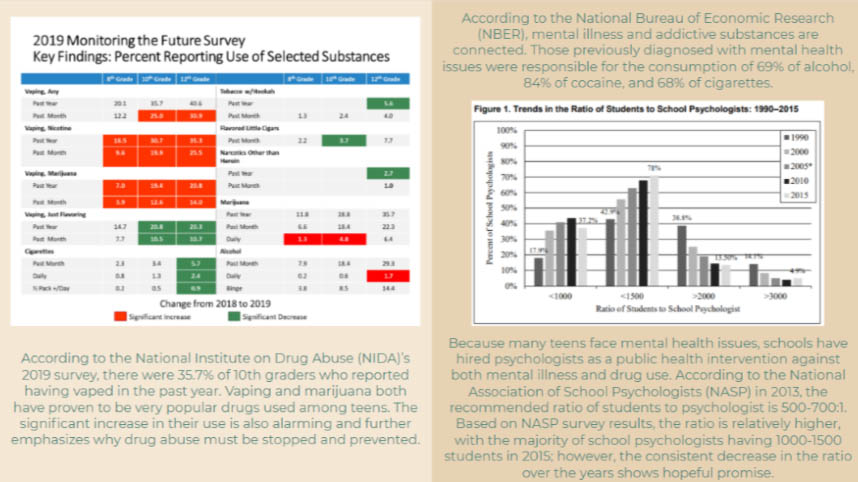
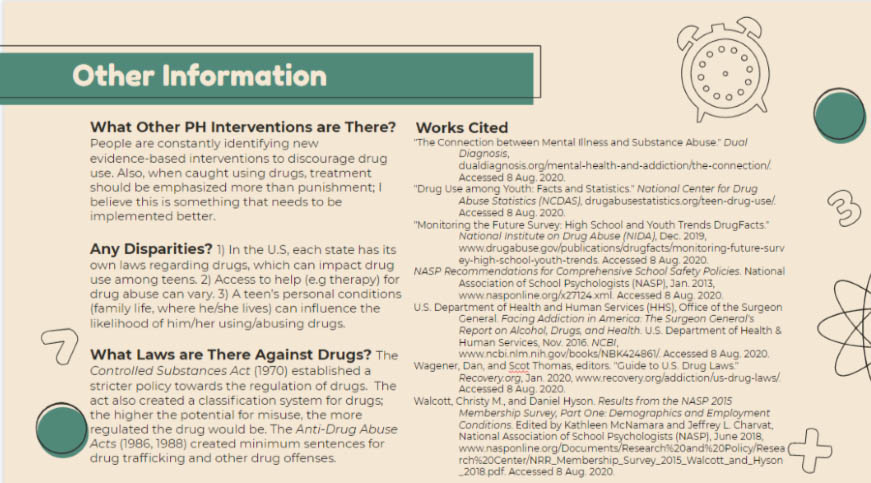
Check out the CDC’s Adolescent and School Health webpage on Substance Use Among Youth for more information on the topic.
Out of the CDC Museum Collection

This month we bring you Wellbee, the ‘health educator’s friend’. Wellbee is a cartoon character that exemplified “wellbeing.” With this month’s public health topic being healthy schools, Wellbee seems like a perfect fit.
More than 50 years ago, when CDC was still the Communicable Disease Center, Public Information Officer George M. Stenhouse wanted to develop a public health symbol that could be used by all state and local public health agencies in the U.S.
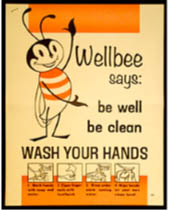
In response, staff artist Harold M. Walker, who had previously worked as an animator in Hollywood on cartoons such as “Felix the Cat,” took to his drawing board to design Wellbee. Wellbee was first introduced to the public on March 11, 1962, in The Atlanta Journal-Constitution newspaper.
CDC designed a comprehensive marketing campaign that used newspapers, posters, leaflets, radio and television, as well as personal appearances at public health events. Wellbee’s first assignment was to help promote Sabin type II oral polio vaccine.
Wellbee’s future assignments included other health promotion campaigns, such as diphtheria and tetanus immunizations, hand-washing, physical fitness, oral health promotion, and injury prevention.

Mr. Stenhouse announced in a February 1963 memo to members of the Conference of State and Territorial Directors of Public Health Education that “Wellbee, the ‘health educator’s friend,’ had a busy year. He was particularly active in promoting community polio programs. He spoke Spanish in New Mexico; he came to life in costume in Hawaii and led a parade.”
Want to learn more about healthy school and do a fun digital scavenger hunt?
Time: ~30 min to complete
See below for more details.
Want to learn more from a CDCer who works in the Division of Adolescent and School Health (DASH)?
Mental health is an important part of overall health and well-being. Mental health includes our emotional, psychological, and social well-being. It affects how we think, feel, and act. It also helps determine how we handle stress, relate to others, and make healthy choices.
Mental health is important at every stage of life, from adolescence through adulthood.
Evaluate your school’s mental health program.
Use the hashtag #CDCTeenNewsletter
CDCM PHA Teen Newsletter Scavenger Hunt
September 2020
Step 1: Download the GooseChase iOS or Android app
Step 2: Choose to play as a guest
Step 3: Enter game code – VJ6XWX
Step 4: Enter password – CDC
Step 5: Enter your email as your player name (this is how we will contact you if you are the prize winner)
Step 6: Go to https://www.cdc.gov/healthy-schools/about/ to complete your missions.
Tips for Winning:
- All answers are found on the website, see Step 6.
- Open-ended answers and photo submissions are evaluated for accuracy.
- Complete all the missions by 01/04/21 11pm EST, to be entered into a drawing for a prize.
- Make sure to make your player name is your email.
Have fun!
